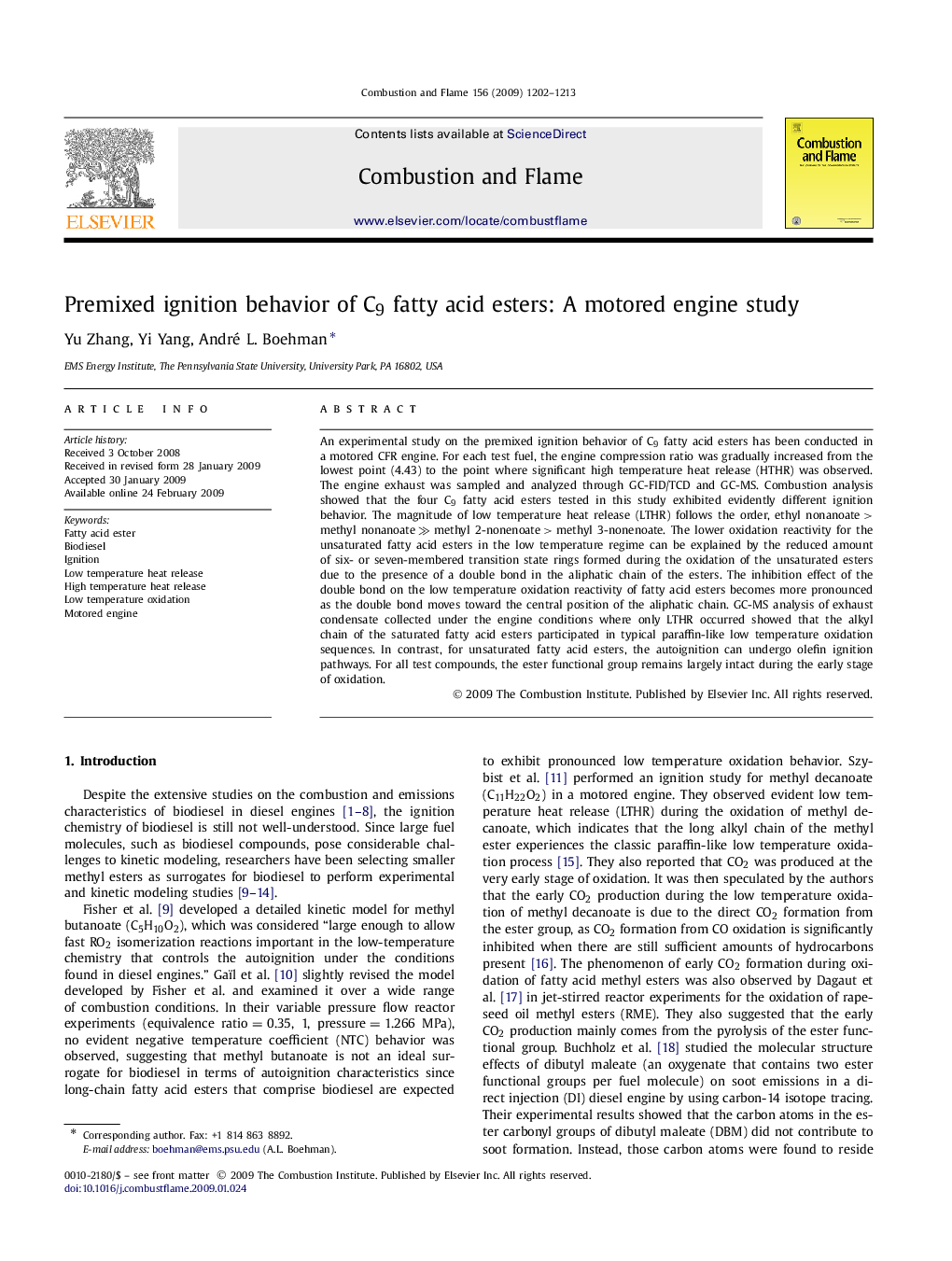| Article ID | Journal | Published Year | Pages | File Type |
|---|---|---|---|---|
| 166986 | Combustion and Flame | 2009 | 12 Pages |
An experimental study on the premixed ignition behavior of C9 fatty acid esters has been conducted in a motored CFR engine. For each test fuel, the engine compression ratio was gradually increased from the lowest point (4.43) to the point where significant high temperature heat release (HTHR) was observed. The engine exhaust was sampled and analyzed through GC-FID/TCD and GC-MS. Combustion analysis showed that the four C9 fatty acid esters tested in this study exhibited evidently different ignition behavior. The magnitude of low temperature heat release (LTHR) follows the order, ethyl nonanoate > methyl nonanoate ≫ methyl 2-nonenoate > methyl 3-nonenoate. The lower oxidation reactivity for the unsaturated fatty acid esters in the low temperature regime can be explained by the reduced amount of six- or seven-membered transition state rings formed during the oxidation of the unsaturated esters due to the presence of a double bond in the aliphatic chain of the esters. The inhibition effect of the double bond on the low temperature oxidation reactivity of fatty acid esters becomes more pronounced as the double bond moves toward the central position of the aliphatic chain. GC-MS analysis of exhaust condensate collected under the engine conditions where only LTHR occurred showed that the alkyl chain of the saturated fatty acid esters participated in typical paraffin-like low temperature oxidation sequences. In contrast, for unsaturated fatty acid esters, the autoignition can undergo olefin ignition pathways. For all test compounds, the ester functional group remains largely intact during the early stage of oxidation.
